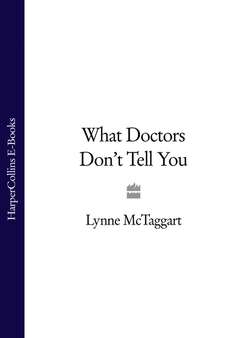Читать книгу What Doctors Don’t Tell You - Lynne McTaggart, Lynne McTaggart - Страница 13
CHOLESTEROL TESTS
ОглавлениеToday, a cholesterol test is the most-often sought diagnostic test of all. In a general check-up a doctor will routinely offer you one to determine whether if you are at risk of heart disease. The test measures the amount of cholesterol and triglycerides in the serum (the non-cellular part) of your blood.
A total cholesterol test, which is rarely used these days, will examine all the blood fats, including the overall cholesterol level, the LDL (low-density lipoproteins, or ‘bad’ cholesterol), HDL (high-density lipoproteins, or ‘good’ cholesterol), VLDL (very low-density lipoproteins), chylomicrons (fats that are present right after a meal but ordinarily disappear within two hours) and triglycerides (compounds in the body that shift fatty acids through your blood). However, the typical cholesterol test only examines the LDL cholesterol.
The test requires a relatively straightforward blood test. You are asked to fast for 9–12 hours before the test is taken. A tourniquet is applied to your arm, so that the lower veins will pool with blood, and the blood is drawn from a vein either on the inside of the elbow or the back of the hand.
All fat tests (lipids, as they are known in medicalspeak) are measured in terms of milligrams per deciliter of blood (mg/dL). Medicine rates as acceptable a total cholesterol count of less than 200 mg/dL. The current medical wisdom is that the higher the cholesterol count, the greater the risk of heart disease or atherosclerosis (clogged arteries), and that if your levels are over 240 mg/dL you nearly double your risk of heart disease, compared with someone in the normal range.
The (largely unsubstantiated view) is that high LDL cholesterol levels may be the best predictor of risk of heart disease; if you have no other risk factors, your LDL count should come in at below 160 mg/dL. People with diabetes, heart or vascular disease, other risk factors or a family history of heart disease should try to keep their cholesterol levels even lower, say doctors.
Medicine loves statistics, and nowhere is this more evident than with this test, where a high LDL is thought to be countered by a high HDL, and vice versa. HDL cholesterol levels of 60 mg/dL are thought to counteract other risk factors; HDL levels below 40 mg/dL themselves become a risk factor.
Even if you have low LDL and high HDL cholesterol, high triglyceride levels may put you at risk. For instance, a normal triglyceride level should be less than 150 mg/dL. A vast array of conditions can result in an inaccurate test – liver disease, an underactive or overactive thyroid, kidney problems, liver disease, malabsorption of your food (say from a leaky intestinal tract), pernicious anaemia, infection and diabetes that isn’t under control. Pregnant women and those who have had their ovaries removed also will register high on the test. An array of prescription drugs – beta-blockers, thiazide diuretics, steroids, phenytoin, sulphonamides, the Pill, even vitamin D – can also throw off your test.
The other problem is the inherent inaccuracy of the lab test itself. According to one study, some 70 per cent of samples analysed have evidence of bias in the computation of results21; other research shows the products themselves used to measure blood cholesterol have major drawbacks.22 In one Canadian study of total cholesterol tests, nearly one-quarter were misclassified (as, say high risk), nearly a fifth registered a false-positive (a high cholesterol level when it wasn’t) and among those in the ‘high risk’ category, half had a false-positive reading.23
A few people in medicine are waking up to the fact that LDL levels alone are not an accurate predictor of heart disease. A large British Health Survey for England found that forecasting heart disease was far more accurate when factoring in the HDL levels, too.24
